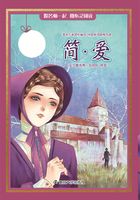"Shall we finish our chat about the beaks of birds?" asked Fred.
"Oh yes, boys, do, please," said Norah. "I have been watching the ducks grope about in the mud with their broad flat bills, and I can"t make out why they are always doing it.""Well, we will talk about the duck"s bill first, if you like," said Fred. "Teacher had a real duck"s head to show us today. We took it in our hands and examined it for ourselves.
"The bill is, as you say, broad and flat, like a sort of shovel. It is not at all like any of the bills we have already examined. We found we could easily bend the mandibles in our fingers, for they are not hard. Such a bill therefore could not be meant for tearing flesh, for boring holes in trees, nor for stabbing its prey.
"We began to be ver y curious when teacheropened the mandibles and pointed out to us, along the edge of the upper one, a row of fifty or sixty projecting points. These form a sort of stiff fringe, something like the teeth of a comb. The tongue, which is large and fleshy, fills the whole of the mouth. All round the edge of the tongue there is a fringe, something like that which hangs from the mandible.""How very strange," said Norah. "I can"t think yet what the meaning of it all can be.""When the mouth is shut," Fred went on, "the fringe on the edge of the tongue and that hanging down from the mandible fit into each other.
"These birds find their food by groping in the mud, with their shovel-like bills. The mud and dirty water are strained out at the sides of the mouth, but the insects, grubs, and worms, and whatever is fit for food are held back by the fringed edges as in a trap.
"You see, ducks live on grubs and worms, like the woodpecker, but they catch them in a different way.
"Geese and swans of course belong to the same class of birds.""The nut-cracking birds have very curious beaks," saidWillie. "Next time you see a parrot, Norah, have a good look at its beak. It is a short, strong, hooked bill, with a sharp point.
"These birds and others of the same class live on nuts, fruits, and berries, and they use their strong bills as their nutcrackers.""Most of our small birds live on seeds, don"t they?" asked Norah.
"Yes, and we might put them all in one class and call them seed-eating birds," said Fred.
"The beak is short, hard, and strong,
and shaped like a cone. They use these bills to crack the husks of the seeds.""Oh yes," said Norah, " I have often watched our canary crack his seeds and drop the husks on the floor of the cage."SUMMARY
Ducks, geese, and swans have flat, shovel-like bills. They grope in the mud with them for grubs and worms. The nut- cracking birds have hard, strong, hooked bills. The beaks of the seed-eating birds are short and cone-shaped.
Lesson 13













